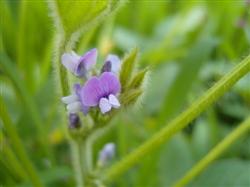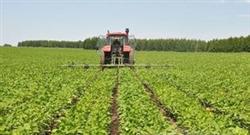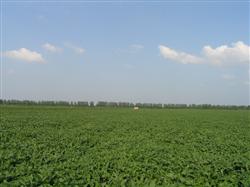Safe use technology of pesticides in the production of high-oil soybean

In the production process of high-oil soybean, the safe use of pesticides is very important. Improper use of pesticides can cause human and animal poisoning, environmental pollution, affect the yield and quality of soybean, especially on the oil content of soybean. The safe use of pesticides includes two aspects, one is the selection of pesticide varieties, the other is the use of technology. The production of high-oil soybean should have obtained the pesticide registration certificate or temporary registration certificate of the Pesticide Control Institute of the Ministry of Agriculture, and has organized experiments and demonstrations by the plant protection department, using technologically mature pesticide varieties, and has good safety for soybeans. In this paper, the control techniques of diseases, insect pests and weeds in the production of high-oil soybean are introduced as follows: 1. Control techniques of diseases and insect pests in soybean root diseases and insect pests are mainly root rot, cyst nematodes and root flies, followed by thrips and jumping beetles. Soybean root rot is infected by a variety of pathogens, such as Fusarium, Pythium, Rhizoctonia solani, Penicillium and so on. The pathogen begins to infect soybean seeds and can still occur until the middle and later stages of soybean growth. Fusarium oxysporum (Fusarium oxysporum, Fusarium graminearum, Fusarium oxysporum, Fusarium oxysporum, The requirement of seed coating agent can protect the main root and seedlings, postpone the infection of pathogens, reduce the harm, have a wide range of sterilization and have a long effective period, preferably a lasting period of 2 months. Fludioxonil suspension seed coating agent is effective against Fusarium and Rhizoctonia solani with a duration of more than 2 months, metalaxyl suspension seed coating agent against Pythium with a duration of about 25 days, and carboxin+thiram suspension seed coating agent against Fusarium oxysporum, Rhizoctonia solani and Pythium with a duration of more than 1 month. Ninanmycin is effective against Fusarium and Pythium with a duration of about 25 days, while MB-97 and Streptomyces rhamnoides Streptomyces microflavus are effective against Fusarium and Penicillium, while Yimi (Bacillus cereus Bacillus cereus) has a good preventive and inhibitory effect on soybean root rot and lasts for more than 45 days. 35% doxorubicin (thiram + carbendazim + carbofuran) seed coating agent is effective against Fusarium, Rhizoctonia solani and Pythium with a duration of about 25 days. The harm of soybean root rot is serious in lowland and continuous cropping land, and seed coating agent should be mixed or combined with biological agents in order to obtain good control effect. Per 100kg soybean seed is mixed with 2.5% Sylvite 150 mL 20% Apron 40 mL, or 2% carbamate 1000-1500mL or 35% doxorubicin 1000-1500ml + Yiwei 100-150mL mixed with soybean seed fertilizer or biological fertilizer per hectare. 35% doxorubicin is effective against soybean root fly, jumping beetle and thrips, and has only 10-color repellent effect on soybean cyst nematode for 15 days. It is used in plots below moderate to light when soybean cyst nematode occurs, and the plots above medium occur only through crop rotation without other effective control measures. B. Soybean Sclerotinia sclerotiorum was sprayed with 25% prochloraz (prochloraz) 1050mL or 40% Sclerotinia sclerotiorum 250-1000g or 50% trimethoprim 1500g or 50% carbendazim 1500g or 80% carbendazim 750g or 40% carbendazim 1500ml + Yiwei 120-250mL or 0.13% Kangkai 30-40g + rice vinegar 1.5L per hectare. C. Soybean gray leaf spot was sprayed with 80% carbendazim 750g or 40% carbendazim 1500mL or 70% methyl thiophanate 900-1000g or 50% methyl thiophanate 1200ml + potassium dihydrogen phosphate 2500-3000g + rice vinegar 1.5L + Yiwei 150-250mL per hectare from late July to early August. D. Soybean aphids were fogged with 50% fogs 150-225g / ha or 2.5% cyhalothrin (cyhalothrin), 2.5% cypermethrin (deltamethrin), 10% cypermethrin, 5% cypermethrin (cis-fenvalerate) 225mL or 7% imidacloprid 1520g + 1.5L rice vinegar. E. Soybean heart borer was sprayed with 2.5% enemy to kill 375-450mL or 2.5% kungfu 300mL or 50% cypermethrin 375-450mL or 20% cypermethrin 450ml + rice vinegar 1.5L + Yiwei 150-250ml + potassium dihydrogen phosphate 2500-3000g per hectare. F, soybean thrips use 5% fipronil (fipronil) 300-450mL per hectare. G, meadow borer killed 225-300mL or 5% Laifuling 300mL with 2.5% kung fu or 2.5% enemies per hectare. The amount of spray per hectare for pest control is 100L per hectare, 100L for tractors and 30L for aircraft. Adding 0.5% Mel 1.0% vegetable oil spray auxiliaries, such as Synertrol, Yaoxiaobao, etc., to the solution can reduce the dosage by 30% and 50%. 2. Weed control herbicides can be selected with Jindur, Dur (Metolachlor), Metolachlor (Metolachlor), Metolachlor ( High-efficiency cauliflower (dextropyrifothyl), fine grass (quinoline, Gaisheng, Fengshan gaicaoling), Pater (quinoxalyl), Weiba (oxazolyl), soybean Huan, brucine, herbicide, fluorosulfenesulfen, paicaodan (promethazone) Easy ploughing, easy ploughing of beans, burning of weeds, kekuoling, herbicide, golden beans (not recommended in low-lying and cold areas), Saike (azinone, limited to soils with organic matter content more than 2% and pH less than 7). 72% 2mine4-butyrate per hectare is limited to less than 750mL, effective for unearthed perennial and annual broad-leaved weeds, and safe for soybeans. The outstanding problem in soybean field is the control of refractory weeds, such as duckweed, Xanthium sibiricum, Saxifraga przewalskii, borage, Reed, Solanum nigrum, wild millet and other weeds, the following control measures should be taken. A. The use of mechanical weeding and chemical weeding combined with deep cultivated land and deep ploughing has 70% and 80% control effect on perennial weeds. It is easy to control perennial weeds by cutting off the underground rhizomes and then using herbicides. Perennial weeds are seriously damaged plots, so it is difficult to have a good weeding effect by relying solely on chemical weeding. B. Select herbicide Soybean pre-seedling herbicide 70% soybeans 3.0-3.5L per hectare 48% Guangmijing (Guangmijing, Tian Deji, Doucaoling) 1.0 min 1.5L 96% Jindu 0.8-1.0L or 72% Dur 1.5-2.0L or 72% Isoprochlor 1.5-2.0L or 50% Lefeng Bao 2.2L or 90% Acetochlor (90% Acetochlor) 1.5cv 1.9L + 80% Kuocaoqing 30g or 50% quick harvest 70L 90g or 72% 2M 4-butyrate 750mL mixed spray. The best period for the control of refractory weeds is from the true leaf stage to the compound leaf stage of soybean seedlings. 18% ploughing is available for 3.3L per hectare. 48% Guangmianling (Guang Mi Jing, Tian Deji, Doucaoling) 1.0L 25% fluorosulfen 1.0L or 48% paicaodan (prednisone) 1.5L ·45% stably killed 600mL or 10.8% efficient cover grass energy 375mL or 5% fine grass gram 600mL mixed spray. The amount of herbicide spray per hectare tractor is 180ml 200L, artificial 300L per hectare, and the amount of tractor spray after seedling spraying is less than 100L per hectare, artificial 100L-150L, 1.0% vegetable oil spray auxiliaries are needed, such as Yaoxiaobao, Xindebao, Kuaide 7 (Quad7), Hasten and so on. C. Select the nozzle to spray the pre-seedling herbicide tractor and manually select the Teejet11003/ 11004 fan nozzle with a 50-mesh filter. Teejet 80015 fan nozzle, Teejet11001/110015/ 80015 fan nozzle and 100 mesh sieve filter were selected for the tractor after spraying herbicide. D. Select the appropriate pressure and speed to spray pre-seedling and post-seedling stem and leaf contact herbicides, the spray pressure is 196.1 KPA 294.2 KPA, and the spray pressure is 294.2-490.3kPa after spraying. When spraying herbicide, the walking speed of the tractor is 6-8km/h. E, pay attention to the application time should be before 8: 00 in the morning, after 5: 00 in the afternoon, preferably at night. At the same time, it is required that the temperature is below 28 ℃, the air relative humidity is above 65%, and the wind speed is below 4m/s.
- Prev

Technical points of fertilizing soybean
The amount of soybean fertilizer should not be too much. Excessive application of base fertilizer will seriously affect seedling emergence and rooting. Planting fertilizer will cause serious damage to the radicle and Hypocotyl of soybean, and even cause some seeds can not germinate, chemical fertilizer and seeds should never be sowed into the soil at the same time. Due to excessive base fertilizer or topdressing, soybeans will grow too much.
- Next

Extra-root topdressing technology in soybean production
In soybean production, paying attention to extra-root topdressing is an important measure to increase yield and income. Therefore, it is necessary to grasp the characteristics of fertilizer requirements of soybean at different growth stages and supplement nutrition in time to meet the needs of soybean growth and development, so as to achieve the purpose of increasing production and income. Principles of fertilization: suitable for phosphorus and potassium, less nitrogen, micro-application of molybdenum. Because.
Related
- The first cup of black tea in spring, the flavor and history of tea gardens in Kenya, Africa
- The computer can not only choose potatoes, but also grow tea rice. AI will grow winter oolong tea champion.
- It is not only the inflated tea bitten by insects, but also engraved with the four seasons tea in Beipu.
- The Oriental Beauty Tea Festival in Zhuxian County takes the stage at the weekend to experience the plus-size feast of oil tea.
- & quot; Oriental Beauty Tea & Exploration of Emei in Hsinchu, the hometown of quot;
- The new variety of strawberry "Tainong 1" dessert is the first choice with mellow aroma. Crimson gorgeous
- History of Tea in Taiwan: from Wild Inner Mountain to Export Tea Garden
- Two types of Taiwan Oriental Beauty Black Tea won the British three-Star Award for Childhood Tea Xiang Zhang Jiaqi changed from pilot to champion tea maker.
- Banana species and varieties: the planting history of Taiwan Xianren banana and dwarf banana is long, is banana disease resistant?
- Coffee planting Technology: Qianjie Coffee from Seedling to harvesting

